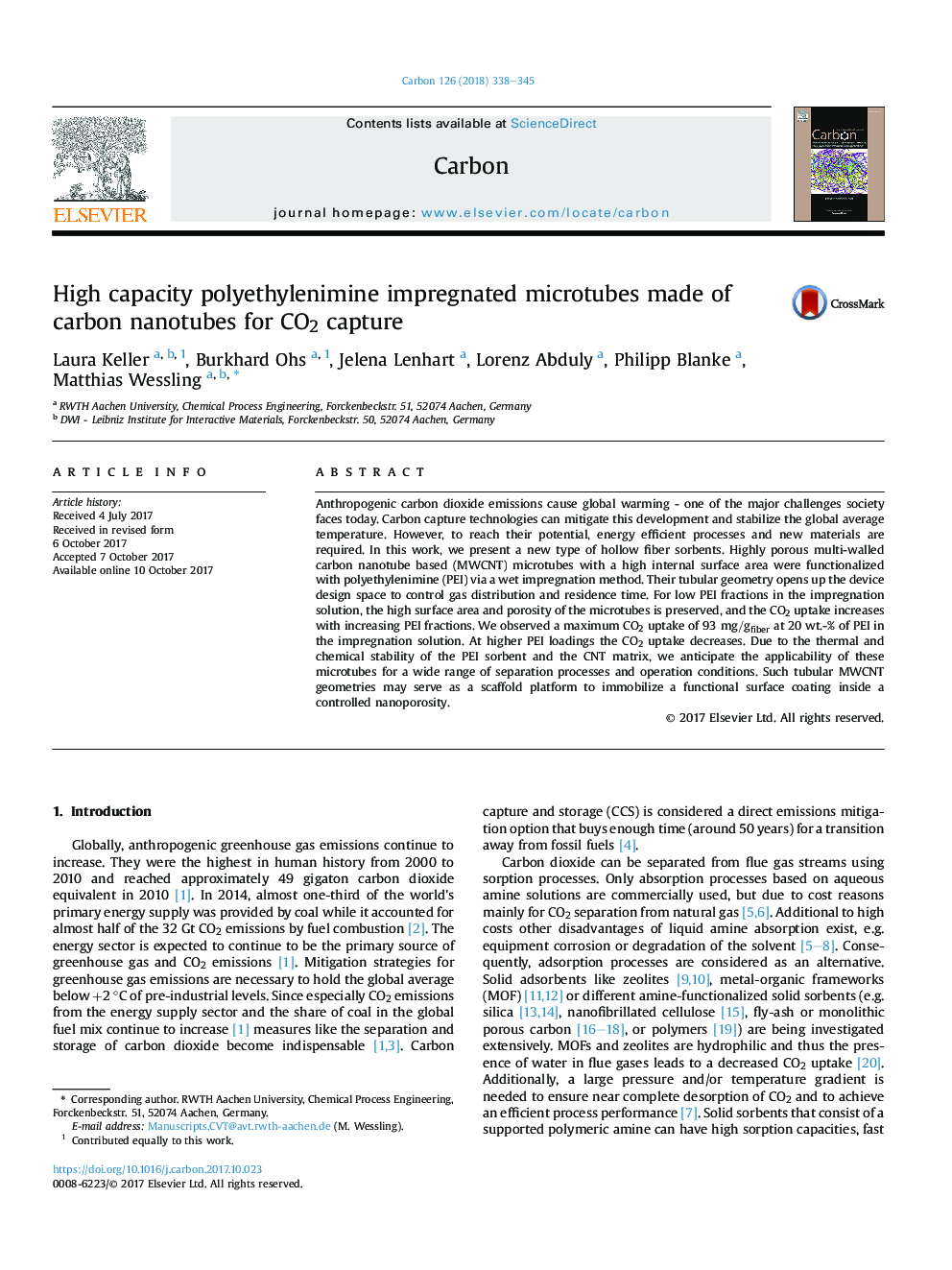| Article ID | Journal | Published Year | Pages | File Type |
|---|---|---|---|---|
| 5431517 | Carbon | 2018 | 8 Pages |
Anthropogenic carbon dioxide emissions cause global warming - one of the major challenges society faces today. Carbon capture technologies can mitigate this development and stabilize the global average temperature. However, to reach their potential, energy efficient processes and new materials are required. In this work, we present a new type of hollow fiber sorbents. Highly porous multi-walled carbon nanotube based (MWCNT) microtubes with a high internal surface area were functionalized with polyethylenimine (PEI) via a wet impregnation method. Their tubular geometry opens up the device design space to control gas distribution and residence time. For low PEI fractions in the impregnation solution, the high surface area and porosity of the microtubes is preserved, and the CO2 uptake increases with increasing PEI fractions. We observed a maximum CO2 uptake of 93Â mg/gfiber at 20Â wt.-% of PEI in the impregnation solution. At higher PEI loadings the CO2 uptake decreases. Due to the thermal and chemical stability of the PEI sorbent and the CNT matrix, we anticipate the applicability of these microtubes for a wide range of separation processes and operation conditions. Such tubular MWCNT geometries may serve as a scaffold platform to immobilize a functional surface coating inside a controlled nanoporosity.
Graphical abstractDownload high-res image (313KB)Download full-size image
